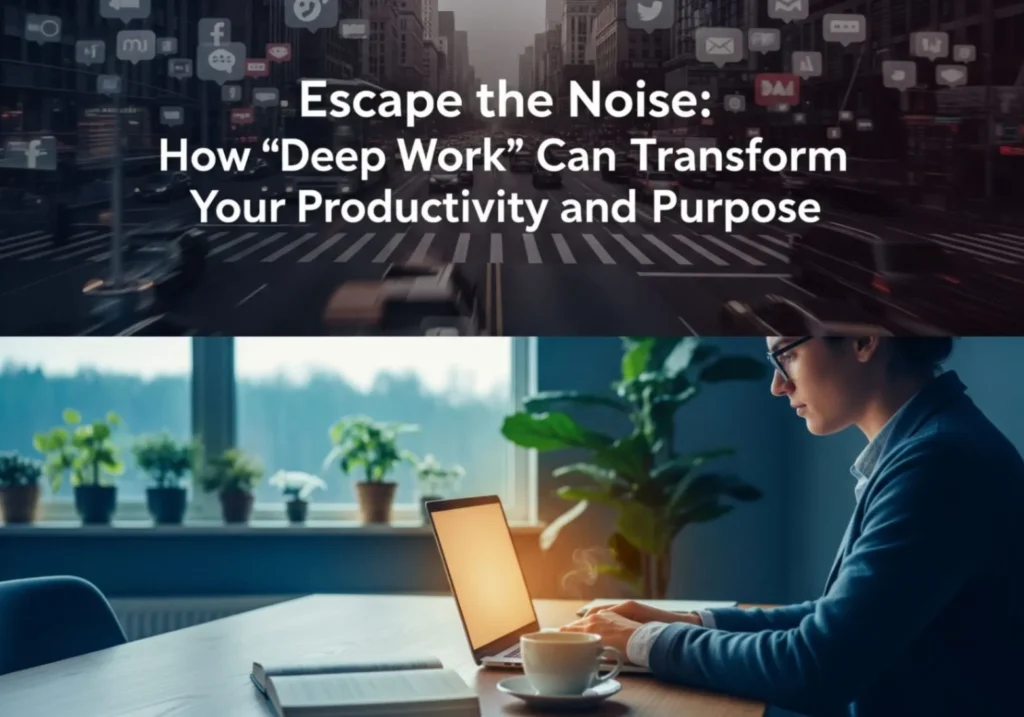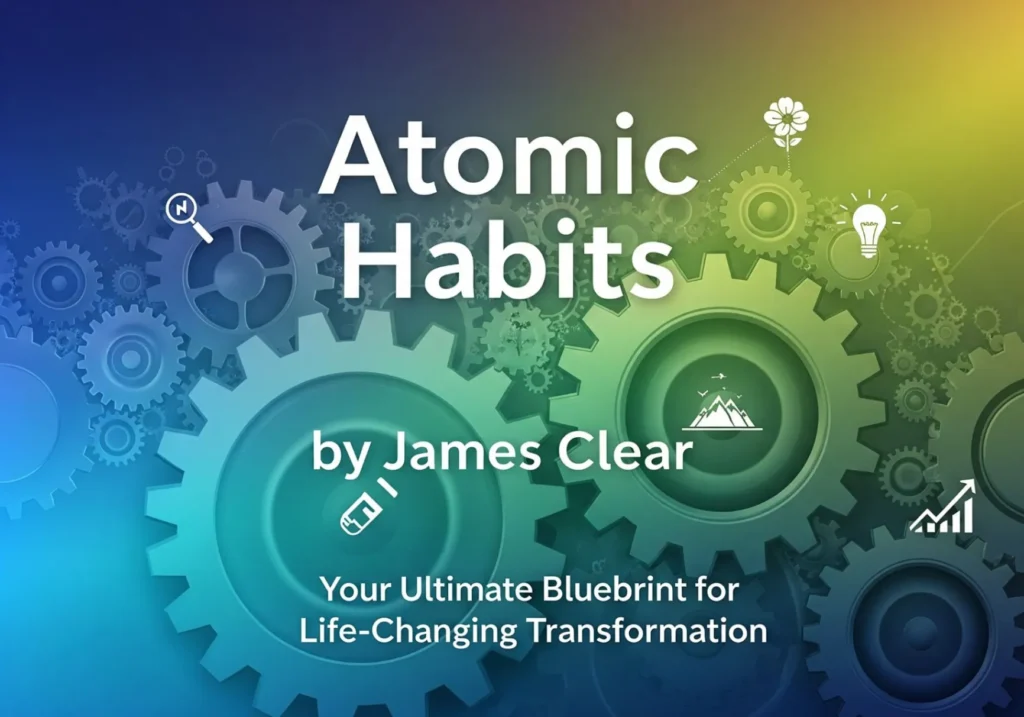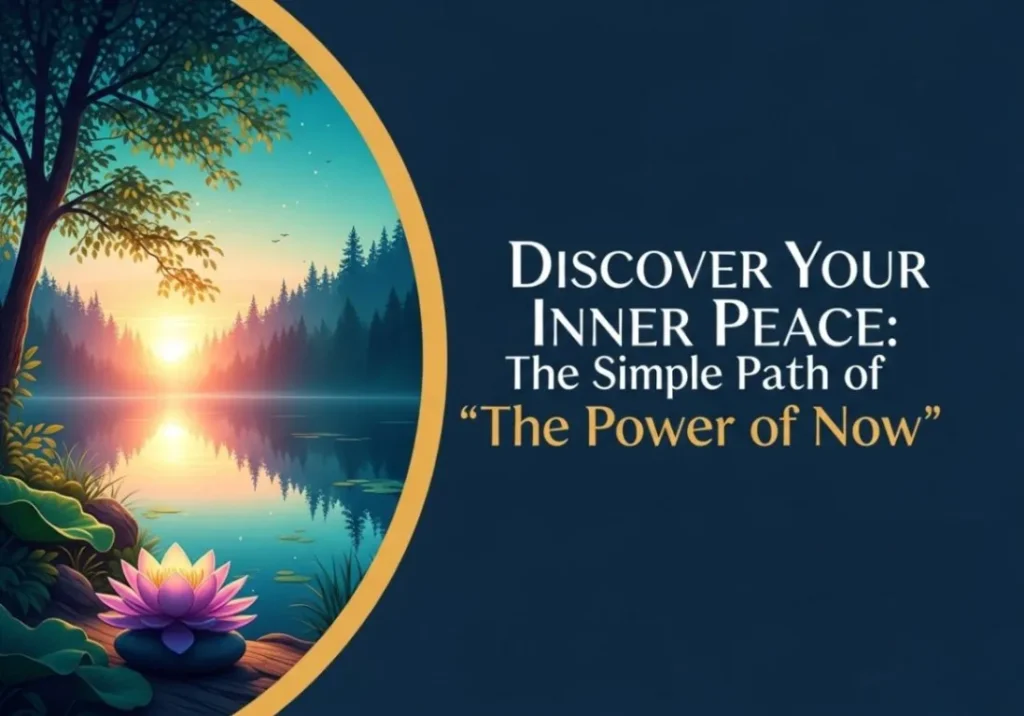Escape the Noise: How Cal Newport’s “Deep Work” Can Transform Your Productivity and Purpose

Introduction: Reclaiming Your Focus
Are you constantly battling a barrage of notifications? Do you have an overflowing inbox and an endless sea of open browser tabs? Perhaps you feel perpetually busy but struggle to make meaningful progress on your most important goals. If this sounds familiar, you’re not alone. In our attention-scarce world, our focus has become a commodity.
According to Cal Newport, a computer science professor at Georgetown University, the answer lies in Deep Work. His seminal book, “Deep Work: Rules for Focused Success in a Distracted World,” is more than just a productivity guide. It’s a profound blueprint for thriving in the 21st century. It’s about cultivating the rare and increasingly valuable ability to focus without distraction on cognitively demanding tasks.
This ultimate guide offers more than a simple summary. We’ll dissect the entire Deep Work philosophy and provide a practical roadmap to implement it. If you’re ready to stop being a slave to your inbox and start creating work that truly matters, then this guide is your lifeline.
The Modern Problem: Drowning in Shallow Work
Before exploring Deep Work, let’s understand the widespread issue of Shallow Work. Cal Newport defines it as:
“Non-cognitively demanding, logistical-style tasks, often performed while distracted. These efforts tend to not create much new value in the world and are easy to replicate.”
Think about how much of your day is spent on answering emails, attending purposeless meetings, and mindlessly scrolling through social media. This is the world of “the shallows,” and several powerful forces keep pulling us deeper into it, including the Principle of Least Resistance and the mistaken belief that busyness equals productivity.
The result? We are inadvertently conditioning our brains for distraction. Each time we switch from a demanding task to a quick phone check, we weaken our “attention muscle.”
Deep Work: Your 21st-Century Superpower
If shallow work is the problem, then Deep Work is the powerful antidote. Newport’s definition is precise:
“Professional activities performed in a state of distraction-free concentration that push your cognitive capabilities to their limit. These efforts create new value, improve your skill, and are hard to replicate.”
Newport’s Deep Work Hypothesis asserts that this ability is becoming increasingly rare while also becoming increasingly valuable. It’s crucial for two reasons:
- Fast Skill Learning: Deep, uninterrupted focus is essential for true mastery of complex skills.
- Elite-Level Performance: Your output is a function of (Time Spent) x (Intensity of Focus). The truly productive maximize “Intensity of Focus,” achieving extraordinary results in less time.
In a world overwhelmed by shallow distractions, the person who can shut out the noise and go deep will be the one who innovates, creates, and leads.
The Deep Work Playbook: Mastering the Four Rules
This isn’t vague advice. It’s about systematically re-engineering your work and life.

Rule #1: Work Deeply
This rule focuses on building the structures and rituals that make deep work a regular part of your life. Newport outlines several philosophies for this:
- The Monastic Philosophy: Radically minimize shallow obligations (not practical for most).
- The Bimodal Philosophy: Divide your time into clear deep-work days and shallow-work days.
- The Rhythmic Philosophy: The most popular approach. Create a consistent, daily habit of deep work, often by time-blocking 60-90 minutes every morning.
- The Journalistic Philosophy: For the advanced. Drop into deep work mode whenever you find a pocket of free time.
Action Plan: Create Your Ritual!
A powerful ritual minimizes the friction of starting. It should specify:
- Where you’ll work: A specific, distraction-free location.
- How long you’ll work: Start with 60 minutes. Use a timer.
- How you’ll work: Define your rules (e.g., no internet, no phone).
- How you’ll support your work: Have coffee, snacks, and materials ready.
Rule #2: Embrace Boredom
This rule is about what you do outside your deep work sessions. If you fill every spare moment with digital distractions, your brain becomes rewired for novelty and loses its ability to focus. You must train your concentration like a muscle.
- Take “Distraction Breaks,” Not “Focus Breaks.” Your default state should be focus. Schedule specific, limited times to indulge in distractions.
- Practice Productive Meditation: Focus on a single, well-defined professional problem while doing something physical like walking or showering.
- Learn to Wait: When in a line, resist the urge to pull out your phone. Allow yourself to be bored. This is powerful mental resistance training.
Rule #3: Quit Social Media (Strategically)
Newport is not against technology; he is against its unintentional use. He proposes the Craftsman Approach to Tool Selection: Adopt a tool only if its positive impacts substantially outweigh its negative impacts on your most important goals.
Action Plan: The Digital Declutter
- Identify Your High-Level Goals: What is most important to you professionally and personally?
- Take a 30-Day Break: Step away from all optional “low-value” technologies.
- Rediscover Quality Activities: Fill the void with books, hobbies, and in-person connection.
- Reintroduce Tools with Intention: At the end of 30 days, only bring back tools that directly and significantly support your goals, and set strict rules for their use.
Rule #4: Drain the Shallows
This rule focuses on minimizing the time you spend on shallow work to preserve energy for deep work.

- Schedule Your Entire Day (Time-Blocking): At the start of each day, assign a task to every 30- or 60-minute block. This forces intentionality.
- Quantify the Depth of Every Activity: Rate tasks on a shallow-to-deep scale to help you prioritize.
- Set a Shallow Work Budget: Agree with your boss (or yourself) on a percentage of your time that should be dedicated to shallow work, and use this to push back on low-value requests.
- Finish Your Work by a Fixed Time: A hard stop time (e.g., 5:30 PM) forces you to be ruthless in cutting out non-essentials.
- Become Hard to Reach: Use “sender filters” and process-centric email replies to make people more thoughtful before contacting you and to reduce back-and-forth communication.
Your 30-Day Deep Work Starter Kit
A Week-by-Week Plan to Begin Your Journey
- Week 1: Audit and Awareness. Track your time honestly. Identify your biggest time-wasters and attention drains.
- Week 2: Build Your First Ritual. Schedule and complete three 60-minute deep work sessions. Practice “waiting” without your phone.
- Week 3: Tame a Major Distraction. Choose ONE digital distraction (like Instagram) and remove it for the entire week.
- Week 4: Drain the Shallows. Try time-blocking for at least two days and set a hard “stop time” for your workday all week.
Deep Work in the Real World: Overcoming Common Hurdles
- Hurdle #1: “My boss expects me to be available instantly.”
Solution: Manage expectations. Demonstrate the value of your deep work through clear results. Inform your boss of your process (e.g., “I check email at 11 AM and 4 PM”) and show that your slower response time on non-urgent matters leads to higher quality output. - Hurdle #2: “I work in a loud, distracting open office.”
Solution: Create a bubble of focus. Use noise-canceling headphones, find a quiet “cave” like an empty conference room, or shift your hours to be in the office when it’s quiet. - Hurdle #3: “My job is inherently collaborative and reactive.”
Solution: Identify and protect the deep components of your job, even if it’s just one 90-minute block per week. Structure your collaboration with clear agendas to make it deeper and more effective.
Conclusion: The Choice is Yours
The currents of modern life—constant connectivity, the allure of the shallows, the culture of busyness—are all flowing in the opposite direction of Deep Work. Choosing to cultivate a deep life is truly an act of rebellion. It is a conscious decision to reject the frantic, anxious state that so many accept as normal.
It’s a powerful declaration that your attention is your most valuable asset, and you will not give it away cheaply.
The path outlined by Cal Newport isn’t easy, but the rewards are immense: a career defined by excellence, the ability to master new skills, and a profound sense of fulfillment. The choice is clear: between a life of distracted shallowness and a life of focused depth. Which will you choose?





Your Turn!
What is the single biggest distraction that keeps you from doing Deep Work? And what is ONE strategy from this article you will implement this week to fight back? Share your commitment in the comments below! Let’s start this rebellion together.